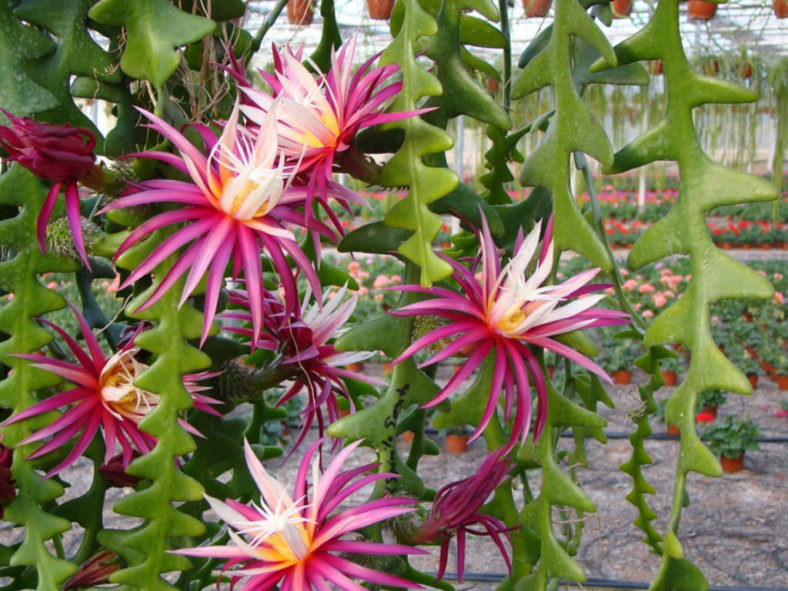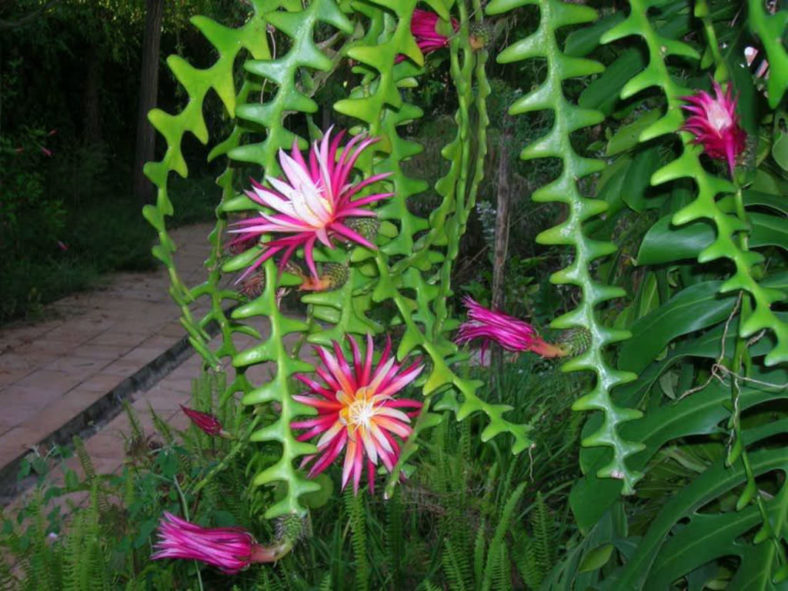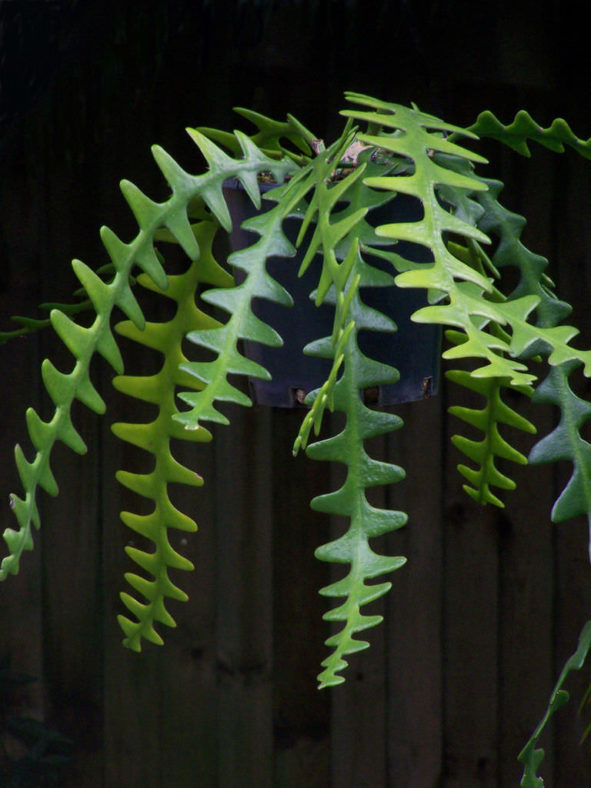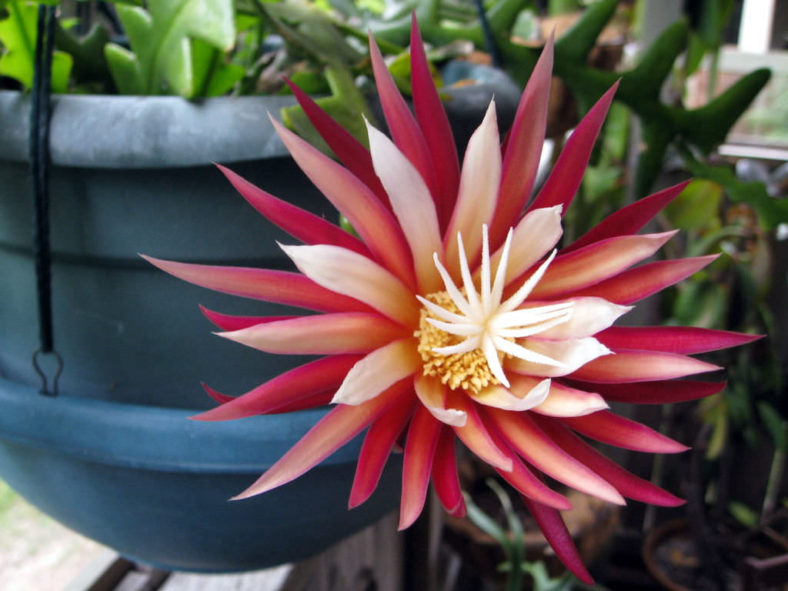Scientific Name
Selenicereus anthonyanus (Alexander) D. R. Hunt
Common Name(s)
Fish Bone Cactus, Fishbone Orchid Cactus, Rick Rack Cactus, Ric Rac Orchid Cactus, Zig-Zag Cactus, St. Anthony's Rik-Rak
Synonym(s)
Cryptocereus anthonyanus
Scientific Classification
Family: Cactaceae
Subfamily: Cactoideae
Tribe: Hylocereeae
Genus: Selenicereus
Etymology
The specific epithet "anthonyanus" (pronounced "an-tho-nee-AY-nus") honors Dr. Harold E. Anthony, an American mammalogist, in whose garden in Englewood, New Jersey, United States, this species first flowered in 1950.
Origin
Selenicereus anthonyanus is native to southern Mexico. It grows as an epiphyte in moist lowland rainforest in the states of Chiapas, Oaxaca, Tabasco, and Veracruz at altitudes of 590 to 1,640 feet (180 to 500 m).
Description
Selenicereus anthonyanus, formerly known as Cryptocereus anthonyanus, is a fast-growing, highly branching cactus with ascending or climbing stems that have a distinctive zig-zag pattern. It branches in clusters at intervals along the notched, narrow stem. The leaf-like branches are green and can grow up to 3.3 feet (1 m) long and 6 inches (15 cm) wide. They have lobes that taper towards a rounded apex. The lobes can measure up to 2 inches (5 cm) in length and up to 0.5 inches (1.3 cm) in width.
The showy, fragrant flowers have dark violet-rose outer petals, white inner petals, yellow stamens, and a prominent white-branched pistil in the center. They can reach a length of 4.8 inches (12 cm) and a diameter of 6 inches (15 cm). The flowers appear in late spring and early summer, open in the late afternoon and evening, and last only one day.

How to Grow and Care for Selenicereus anthonyanus
Hardiness: USDA hardiness zones 10a to 11b: from 30°F (-1.1°C) to 45°F (7.2°C).
Perhaps the most crucial aspect of epiphytic cactus care is the type of potting soil used. Experts are strongly divided on the use of commercial cacti or orchid mixes, but they agree that epiphytes require well-draining potting soil with ample air space, as their roots are exposed to air in their native habitat. If you wish to create your own mix, start with a basic formulation of 60% potting soil to 40% perlite. Other amendments are often added, including peat, orchid bark, sand, fine gravel, and leaf mold. Aim for a pH of 5.0 to 6.0, and plan to repot every 2 to 3 years if you use ingredients that eventually break down completely, such as orchid bark.
In most situations, epiphytes do not exist in direct sunlight. They thrive as houseplants because of their relatively low lighting requirements. Ideally, you should provide full morning sun and shade for the rest of the day. An east-facing window with nothing blocking it can create these conditions. Light will affect the plant's willingness to bloom, though these requirements vary widely between epiphytes. Many can be coaxed into blooming by simulating short days by placing them in dark closets for 12 or more hours at a time for 4 to 6 weeks.
Learn more at Tips for Growing Epiphytic Cacti.
Links
- Back to genus Selenicereus
- Succupedia: Browse succulents by Scientific Name, Common Name, Genus, Family, USDA Hardiness Zone, Origin, or cacti by Genus
Photo Gallery
Click on a photo to see a larger version.


